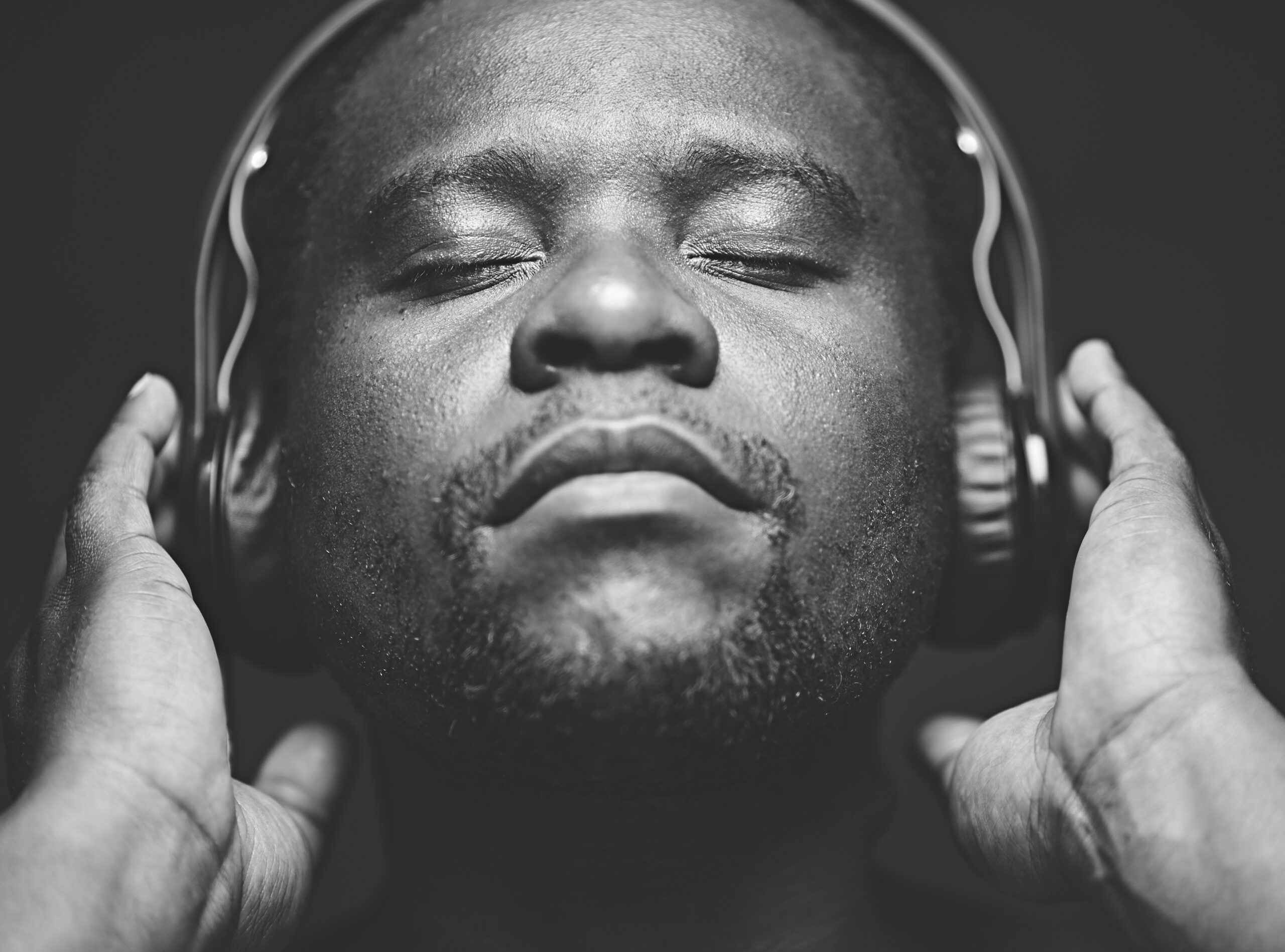Music has the power to create a visceral feeling of emotion. When fused with an advertising campaign, it has the potential to connect with an audience and evoke positive emotion, if executed correctly.

Basis for Understanding
The utilisation of music stems all the way back to the mid 20th century in the form of jingles, created for popular brands which resonated with audiences of the time. Though the style and approach may have progressed with the ever changing environment, there are fundamental questions that can be proposed to better understand music’s place in advertising, and the effects it has in communicating with an audience.
What is music in advertising?
Music has been used in advertising for many years, it refers to the integration into mass media to improve the overall look and feel of an advertisement.
Music in advertising may be sometimes overlooked or seen as just a ‘background’ effect, however, certain music has the potential to seamlessly entangle itself with the visual aspect and even become the focal point of a campaign which can be highly effective in connecting with your preferred audience. There have been several memorable campaigns which have stood the test of time and have positioned themselves in the minds of audiences now and for the foreseeable future, which will be discussed further
Why Use Music in Advertising?
The choice of music must reflect the intended message of your campaign.
Music has the power to elevate any campaign, this is done through the facilitation of emotion.
As we know, emotion is key to any campaign, and this importance stretches to ensuring that the genre of music chosen is in sync with the desired emotional response and messaging being conveyed.
There have been instances in the past where this integration has been misunderstood, therefore diminishing the overall appeal of the campaign. This can be seen most notably in the Royal Caribbean’ advert where they used Iggy Pops’ ‘iconic anthem “Lust for Life” where the song’s messaging hints at drug use and seemed to be inconsistent with the brands overarching image, while the overall tone of the campaign (family friendly) does not match up with the intended message of the song used.
Another example of this can be seen during the Australian wildfires last year when the government issued an advert demonstrating how they are planning on tackling the issue.
The music used attaches no emotion to the gravity of the situation and undermines the important messaging being conveyed while desensitising the overall situation.
Check it out below.
Winner of most inappropriate tone of music in advertising goes to… #AustraliaBurns https://t.co/PTCfwDPlS6
— caroline pegram (@caroline_pegram) January 4, 2020
Music has the power to change our mood in an instinct, it can offer escape from the everyday. Several studies have shown the profound effects on both mood and emotion, furthermore our brains respond increasingly more to melody than to language.
Can Music Persuade Audiences in a Certain Direction?
Yes, it is possible, to a certain extent.
Music has been found to increase cognitive load, which translates to your brain being required to process information and store it as memories.
When music is included in an advert and utilised correctly, it induces a sense of familiarity by requiring the audience to recall memories that may be associated with the piece of music being used. The framework for this familiarity has already been placed in the mind of the consumer and so when viewed as part of the advertisement, the brand becomes part of this framework and is established as a positive association.
Below is a graph representing a study conducted by Thinkbox which demonstrates how music in ads is most effective when the lyrics or tempo matches the visuals being presented. The ads which followed this produced a 14% increased memory response relative to when music in an ad that was recessive (passive or a background element). Interestingly, it was also found that all forms of music (not just well known chart hits) were found to be effective in engaging memory response when used within the context of the visual elements, however well known classics were found to perform best with a 8% higher response rate than more recent chart hits.

This bodes well for brands who execute their advert effectively, if the music used is intended to create positive feelings of emotion, the audience will identify those positive feelings and continually associate them with your brand.

Indeed, there is a risk that the intended messaging being conveyed may become lost in translation, as neuroscience shows that music used in adverts can reduce both critical thought and attention to detail. However, there is an increased probability that you will boost overall brand sentiment amongst your audience.
There is evidence that reaffirms the notion on music being the bridge that connects brand to consumer. Nielsen carried out a study on 600 television adverts and discovered that advertising which includes music tends to have:
- 4% more creative power
- 5% more empathy power
- 3% more emotive power
- 15% more information power
This was relative to advertisements that didn’t include music. Overall music incites emotion and positive association, the next question to ask is – what sort of music will evoke the best emotional response?
Establishing the Perfect ‘Musical Fit’
Context is key.

When deciding the ‘perfect’ song to integrate into your campaign, there are certain indicators that must align in order to ensure that the music and the visual are synced. The harmonious element of both music and visual is essential in eliciting positive emotion, if this element is not adhered to, negative perspectives towards the ad may surface.
An example of an advert that was successful in achieving the ‘musical fit’ can be seen in the Sony Bravia campaign in 2005. The ads concept seems simple – launch 250,000 mulit-coloured bouncy balls down a street in San Francisco. Their aim was to demonstrate the colour capabilities of the Sony Bravia conveyed through the message “Colour like no other”.
The music used for the ad was Jose Gonzales “Heartbeats”, its integration is seamless while elevating the visual.
The combination of the visuals and music creates an almost hypnotic state for the viewer, and immediately pulls you in.
While the tone of the campaign incites feelings of wonder & awe, the music elevates the piece further by eliciting feelings of melancholy through a strong clear sound which puts the viewer in a state of calmness while balancing a positive emotional response. Moreover the music emphasizes the rhythm and harmony of the bouncing balls, furthermore reinforcing the idea of the perfect ‘musical fit’.
Another example where the selection of music was best suited to the visual means was Volvo’s campaign which saw Jean-Claude Van Damme perform a leg split between two moving Volvo trucks. The song used for the ad is “Only time” by Enya.
The unusual choice of music surprisingly pairs well with the visual aspects as it adds to the gravity of the stunt.
The tempo of the song perfectly fits into the movement of the camera, as it slowly pans out from Van Dammes’ face to the trucks beginning to part, and the atmospheric vocals of Enya commence. This is perfectly synced with the defining moment of the piece – the leg split.
Similarly to Sony’s campaign, Volvo creates a certain atmosphere in their campaign which draws the audience in, prompting them into a hypnotic state where all focus is on the ad.
The music used creates this ‘atmosphere’ and without it the ad would lose all sense of emotion and intrigue, furthermore it enhances the storytelling and attaches positive association to the brand.
Key Learnings
Important points to remember when using utilizing music in your campaign:
Context is your cornerstone – ensure the music that you have chosen adds to the story and elevates it where necessary. It must match the overall feel and tone of the campaign whilst also aligning with the brands values and positioning. Using a piece of music which is out of context with the ad itself can take away its legitimacy, and undermine the messaging being conveyed, furthermore it can hurt your brand by potentially becoming an internet “meme” and “trolled” online.
Emotion is the main character – as you may already know, emotion plays a key role in any campaign, however when it comes to music it can be tricky. Music can establish a sense of familiarity as previously mentioned, it has the potential to establish positive association within the audience’s minds (using a classic song which might reflect childhood) . By tapping into this, brands can attach themselves to this sentiment, therefore furthering the emotional connection between brand and audience.
Synchronization of music & visual can elevate your ad – as seen in Volvo’s campaign, the synergy between the beginning of Enya’s vocals and Van Damme’s leg split was the climax of of the piece which boosted its overall appeal and impact, without the music the intrigue and atmosphere which draws the viewer in would not take place and the ‘synergy’ would cease to exist.
Conclusion
As we have seen, music can play a pivotal role in any campaign, it’s something that shouldn’t be neglected or deemed less important in the creative process. It has the power to resonate with audiences and heightens the storytelling element.
It can make your ad personal for the viewer if done correctly and is capable of achieving a positive familiarity – songs that remind us of a certain time in our lives. This creates a positive memory which is linked to emotion, and if the piece of music incites a positive emotional reaction then the use of this in your campaign can establish a link between that ‘fond’ memory and your brand.
The importance and effectiveness of music can not be understated in relation to connecting with your audience. Both visual and sound possess equal importance as without them both the campaign loses its engaging qualities.
For more articles like these visit our Blog


